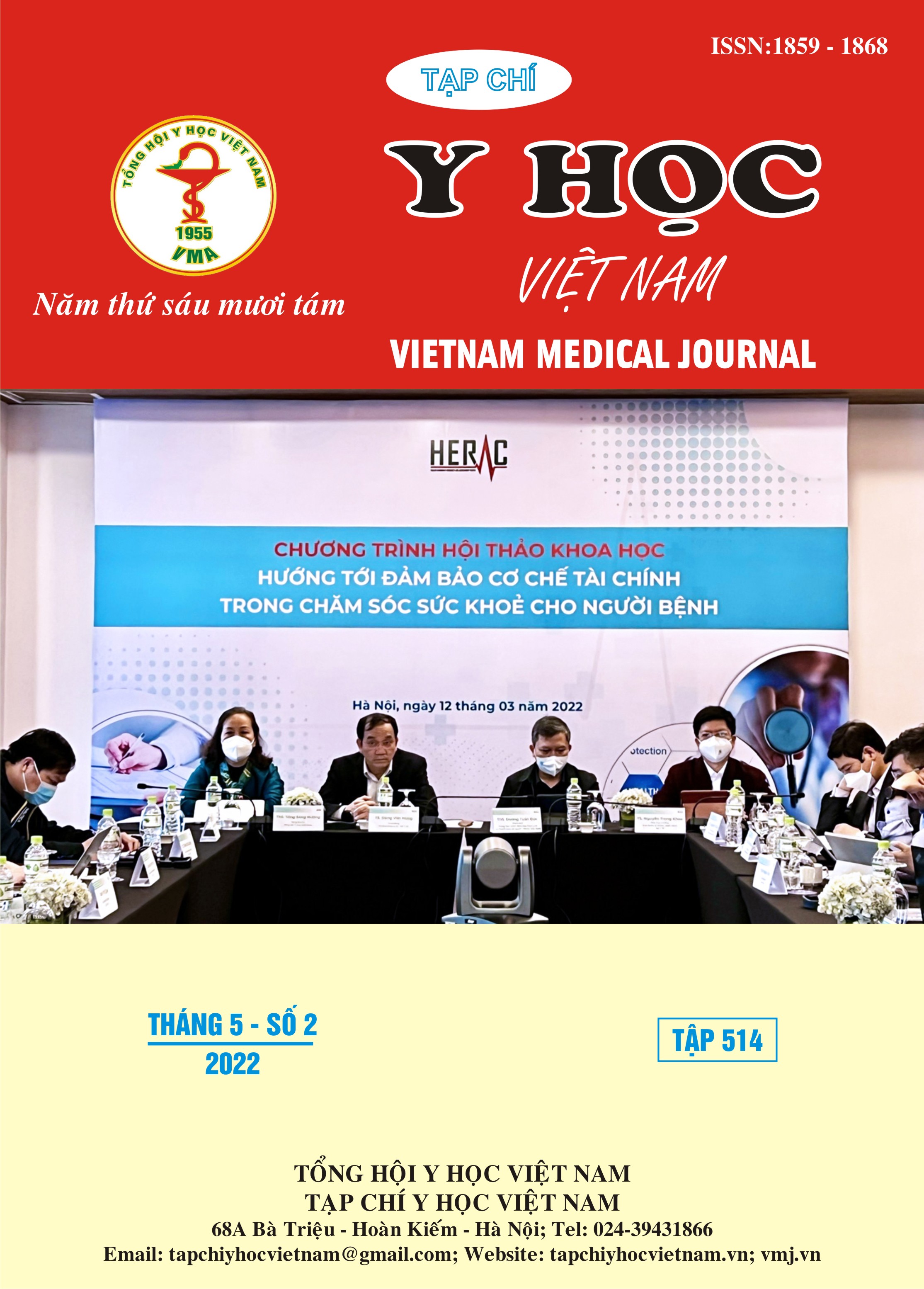EPIDEMIOLOGY AND SEVERITY OF BURNS AT CHILDREN’S HOSPITAL 1, FROM FEBRUARY 2021 TO DECEMBER 2021
Main Article Content
Abstract
Objectives: to describe some epidemiological characteristics and severity of burns in children treated at Children’s Hospital 1. Materials and methods: 201 burn patients were treated at Burn care and Reconstructive surery, Children’s Hospital 1 from February 1st to December 31st, 2021. Methods description of cross section, prospective. Results: 201 children with burns were admitted to Children's Hospital 1 during research time. Children with burns from Ho Chi Minh City 96 (47.8%), transferred from hospital Provincial Hospital 105 (52.2%). Mean age 43.57 ± 44.27 months (02 - 188). Male 113 (56.2%), female 88 (43.8%), male/female ratio about 1.3/1. All months of the year have children with burns, the most in January, February, March, April and the least in July and August. Burns is concentrated in two time periods 8 - 12 hours 90 (44.8%) and 16 - 21:70 (34.8%). Burn time to hospital admission before 3 hours 103 (51.2%), before 24 hours 146 (72.6%), after 24 hours 55 (27.4%) (01 - 1440). Causes of burns due to hot water 160 (79.6%), fire 32 (15.9%), electricity 8 (4%), chemicals 1 (0.5%). Place of burns at home 185 (92%), street 12 (6%), school 3 (1.5). Occupation housewife childcare 64 (31.8%), freelance 53 (26.4%). The educational level of caregivers of children at middle school, high school is 145 (72.1%), and above level high school is 40 (19.9%). Relationship with the caregiver of the child's parents 188 (93.5%). Rate of not giving first aid for burns 72 (35.8%), incorrect first aid for burns 128 (63.7%), correct first aid for burns 1 (0.5%). Average burn area 9.68% ± 12.08% TBSA (1 - 98), burn area < 10% TBSA has 137 (68.2%), burn area 10 - 30% TBSA has 52 (25, 9%), burn area > 30% TBSA has 12 (6%). Burn depth 177 second degrees (88%), 103 third degrees (51.2%), 5 fourth degrees (3%). Location of burns on limbs 153 (76.1%), chest and back 109 (54.2%), head, face and neck 71 (35.5%), genitals and perineum 45 (22.4%). The average length of hospital stay was 11.03 ± 13.56 days (01 - 123). Conclusions: Child burns are a common accident all year round, the season often with many children is late winter and early spring, more than half of children are received from provincial hospitals, more boys than girls, where burns often occur at home. Due to the boiling water, the time of burns often coincides with the time when the caregiver is busy with housework, the first aid rate for burns is not high. The common burn site is limbs, second degrees and third degrees burn, and the TBSA is < 30%.
Article Details
Keywords
child burns, severity of burns, TBSA (total body surface area)
References
2. Nguyễn Viết Lượng (2009), "Tình hình bỏng tại Việt Nam trong 3 năm (2005–2007)", Tạp chí Y học thực hành, tr. 9-13.
3. Morgan, Michael, et al. (2018), "Burn pain: a systematic and critical review of epidemiology, pathophysiology, and treatment", Pain medicine, 19(4), pp. 708-734.
4. Alnababtah, Khalid, Khan, Salim, and Ashford, Robert (2016), "Socio-demographic factors and the prevalence of burns in children: an overview of the literature", Paediatrics international child health, 36(1), pp. 45-51.
5. Armstrong, Megan, et al. (2020), "Epidemiology and trend of US pediatric burn hospitalizations, 2003–2016", Burns, pp. 1-10.
6. Broadis, Emily, Chokotho, Tilinde, and Borgstein, Eric (2017), "Paediatric burn and scald management in a low resource setting: A reference guide and review", African Journal of Emergency Medicine, 7, pp. 27-31.
7. Nguyen, Nhu Lam, et al. (2002), "The importance of immediate cooling—a case series of childhood burns in Vietnam", Burns, 28(2), pp. 173-176.
8. Smolle, Christian, et al. (2017), "Recent trends in burn epidemiology worldwide: a systematic review", Burns, 43(2), pp. 249-257.


